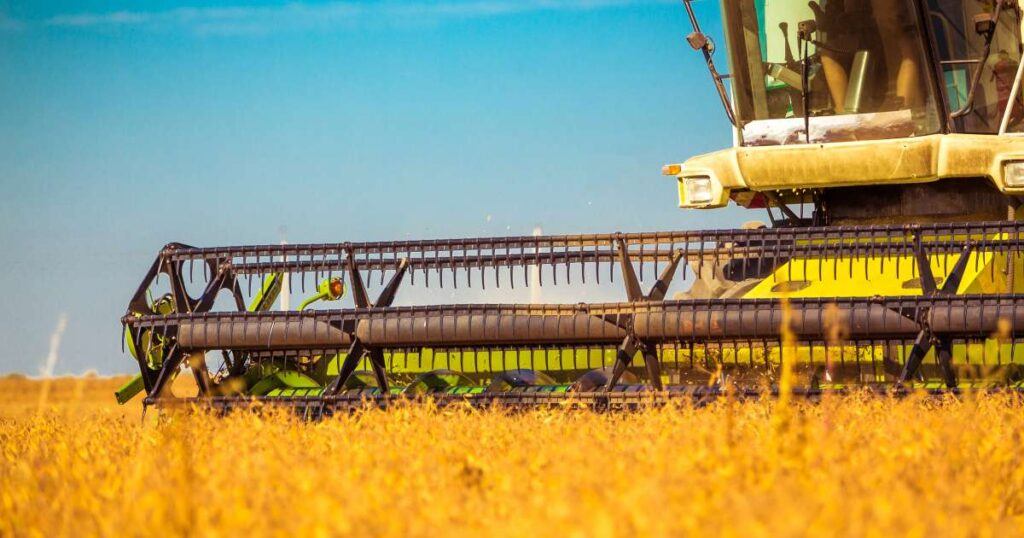
Artificial intelligence (AI) is rapidly changing agriculture in major ways. Some of the cutting-edge advantages of AI in agriculture include improved crop management, increased efficiency, and reduced costs.
AI Drives Precision Ag
One of the most significant advantages of AI in agriculture is improved crop management in precision ag. It allows us to understand data at scale. This lets us identify patterns and trends in crop growth and development. These analytics drive quality decision-making in a variety of spaces:
- Irrigation
- Fertilization
- Pest Control
For example, it can be used to predict yield and optimize crop rotation. Computer vision can be used to monitor crop health and detect diseases early on, which can help prevent crop losses.
Increased Efficiency and Cost Savings
Like any business, agriculture lives and dies with margin. Artificial intelligence increases efficiency, and thus margin, in agriculture. Automation streamlines farm operations, including planting, harvesting, and weeding. This can free up labor and reduce the need for manual labor, saving farmers money.
Machine learning enables predictive maintenance. Timely maintenance is critical in preventing work stoppages due to downed machinery. The reduced downtime isn’t just in preventing a failure before it happens. It’s in ordering part ahead of needing the replacement, so it arrives just-in-time. It’s in scheduling maintenance to coincide with natural downtime.
Addressing Challenges and Adoption
As revolutionary as artificial intelligence is, like all revolutionary technology, adoption is challenging. One of the largest challenges is data privacy and ownership.
Data privacy in the agriculture industry prompts questions like:
- Who owns the performance data for your farm equipment?
- Can you use the telemetry data on the tractor if you take it to a non-dealer repair service?
- Can your tractor dealer sell your field shapes to your neighbor? To other dealers? To the government?
Farmers are naturally hesitant to adopt these technologies without answers to these questions.
Another challenge is integrating with existing agricultural systems. Artificial intelligence uses data from many sources. That means that these systems must be integrated. That integration takes a significant investment in hardware and software. This slows adoption both for small farmers and those who are skeptical of AI’s necessity.
A final hurdle is knowledge. Farmers and farmworkers need training to make the most of AI-enabled tools. Farmers need to be able to understand their tools. Understanding the tools lets you know how to use them. It also lets you know when they’re likely to fail and where they should work best. Without proper planning and training, it’s unlikely the industry will get the full advantages of AI in agriculture.
The Future of AI in Agriculture
Despite the challenges, the future of AI in agriculture is bright. As AI technology improves, we expect to see more uses in agriculture.
By investing in training, education, and development now, we can ensure that AI benefits farmers and the world.
Let’s look at some current examples of AI’s role in Agriculture:
1. Yield Prediction and Optimization
AI can analyze historical data and weather forecasts to predict crop yields. These analytics help optimize future planting, harvesting, irrigation, and fertilization decisions.
2. Crop Health Monitoring and Disease Detection
AI can analyze images and data from sensors to monitor crop health and detect diseases early on. This information can help prevent crop losses and improve yields.
3. Automated Farm Operations
AI can automate tasks such as planting, harvesting, and weeding. Modern farm equipment is often capable of planning its own routes through a field. In some cases, equipment is capable of working in concert with each other with no or minimal human intervention. When equipment doesn’t need an operator, those people are freed up to do other work. This reduces overhead and improves efficiency.
4. Predictive Maintenance for Farm Machinery
While we often think of predictive maintenance in high-risk situations, such as aviation, it crops up anywhere the cost of equipment failure is high. AI can analyze data from sensors to predict when farm machinery needs maintenance. This helps prevent costly breakdowns before they happen. It also reduces unexpected downtime.
5. AI-enabled Supply Chain Optimization
AI can be used to optimize the flow of goods and materials through the agricultural supply chain. This can help reduce costs and improve efficiency.
—
These are just a few examples of how AI is being used in agriculture today. As AI technology continues to develop, we can expect to see even more ways to use it to improve the way we produce food.
Unlock the Power of AI Engineering
From optimizing manufacturing materials to analyzing and predicting equipment maintenance schedules, see how we’re applying custom AI software solutions.
You Might Also Like